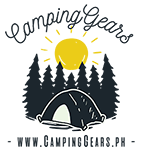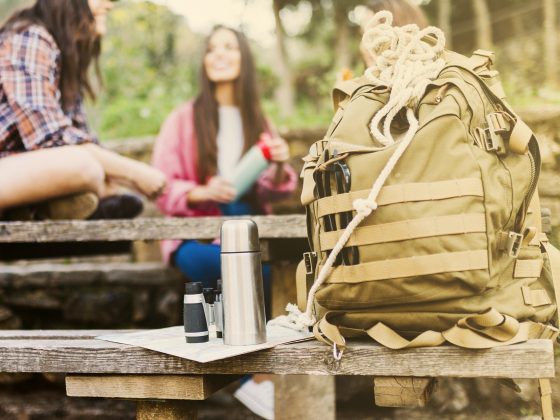There’s nothing quite like the taste of food cooked over an open flame, and what better way to experience it than by cooking over a firepit while camping? But before you pack your cast iron skillet and head out into the wilderness, you should know a few things to ensure your campfire cooking experience is a success.
In this article, we’ll cover everything you need to know to make your next camping trip a culinary adventure. Whether you’re a seasoned camper or a newbie to the great outdoors, these tips will help you create delicious meals and unforgettable memories around the campfire. So let’s get started and explore the things to know before trying firepit camp cooking.
Why firepit cooking is different
Cooking over a firepit is different from cooking on a stovetop or in an oven. It requires a bit more preparation and attention to detail, but the results are well worth the effort. One of the main differences is that firepit cooking is done over an open flame, which means you don’t have as much control over the heat source as you would with a traditional stove. This can make it more challenging to get the temperature just right, but with practice, you can learn to adjust the heat to cook your food perfectly.
Another difference is that firepit cooking is often done outside, so you must be prepared for the elements. Wind, rain, and other weather conditions can affect your fire and your cooking, so it’s important to plan accordingly. You may need to bring extra supplies like a tarp or windbreak to protect your fire and your food.
Finally, firepit cooking is often a communal activity. It’s a great way to bring people together and share a meal, but it also means you need to be prepared to cook for a group. This can require more planning and preparation, but it’s also a great opportunity to showcase your cooking skills and impress your friends and family.
Safety Considerations for firepit cooking
Before you start cooking over a firepit, it’s important to understand the safety considerations involved. Fire can be dangerous, and taking the necessary precautions to prevent accidents and injuries is essential.
First and foremost, always follow the Leave No Trace principles. This means that you should only build fires in designated fire rings or pits and never leave a fire unattended. Make sure to fully extinguish your fire before leaving your campsite by pouring water over the coals and stirring them until they are cool.
When cooking over a firepit, using the right equipment is important. Make sure to bring heat-resistant gloves and long-handled utensils to avoid getting burned. Keep a bucket of water or a fire extinguisher nearby in case of emergencies.
Finally, be mindful of the environment around you. Don’t cut down trees or damage vegetation to fuel your fire, and be aware of any fire restrictions in your camping area. Following these safety guidelines ensures that your firepit cooking experience is enjoyable and safe for everyone involved.
Choosing the right firepit for cooking
When it comes to firepit cooking, not all firepits are created equal. There are several factors to consider when choosing the right firepit for your cooking needs.
First, consider the size of the firepit. If you’re cooking for a group, you’ll need a larger firepit than if you’re cooking for just one or two people. Make sure to choose a large firepit to accommodate your cooking needs.
Next, think about the type of fuel you’ll be using. Some firepits are designed to burn wood, while others are designed to burn charcoal or propane. Each type of fuel has its advantages and disadvantages, so it’s important to choose the one that works best for you.
Finally, consider the design of the firepit. Some firepits are designed specifically for cooking, with features like grates and adjustable racks. Others are more basic and may require additional equipment to cook over. Make sure to choose a firepit that is designed for the type of cooking you want to do.
Essential tools for firepit cooking
Having the right tools can make all the difference when it comes to firepit cooking. Here are some essential tools to bring with you on your next camping trip:
- Heat-resistant gloves: These will protect your hands from burns while cooking over an open flame.
- Long-handled utensils: A set of tongs, a spatula, and a fork will allow you to flip, stir, and serve your food safely.
- Cast iron skillet: This versatile piece of cookware can be used to fry, sauté, or roast a wide variety of foods over a firepit.
- Dutch oven: This heavy-duty pot is ideal for cooking stews, soups, and casseroles over a firepit.
- Grill grate: Many firepits come with a built-in grill grate, but if yours doesn’t, you can purchase one separately to cook meat, vegetables, and other foods directly over the flame.
By bringing these essential tools with you on your camping trip, you’ll be well-equipped to cook delicious meals over your firepit.
Firepit cooking techniques
You can use several techniques to cook food over a firepit, depending on what you’re cooking and how you want it to turn out. Here are a few techniques to try:
- Direct heat involves cooking food directly over the flame, either on a grill grate or the coals. This is a good technique for cooking meat, vegetables, and other foods that cook quickly.
- Indirect heat involves placing food next to, rather than directly over, the flame. This is a good technique for cooking larger or thicker cuts of meat, as it allows them to cook more slowly and evenly.
- Foil packets involve wrapping food in aluminum foil and placing it on the coals or on a grill grate. This is a good technique for cooking foods like potatoes, vegetables, and fish, as it keeps them moist and prevents them from sticking to the grill.
Experiment with different techniques to find the ones that work best for you and the foods you want to cook.
Tips for successful firepit cooking
Here are a few additional tips to keep in mind for successful firepit cooking:
- Use dry wood: Wet wood can be difficult to light and can create a lot of smoke, so make sure to use dry wood for your fire.
- Build your fire properly: Start with a small amount of kindling and gradually add larger pieces of wood as the fire grows. This will help ensure that your fire burns evenly and doesn’t get too hot.
- Don’t overcrowd the firepit: Leave enough space around the firepit for air to circulate and for you to move around safely.
- Clean as you go: As with any type of cooking, cleaning up as you go will make the process much easier and more enjoyable.
- Have fun: Firepit cooking is all about enjoying the process and sharing a meal with friends and family, so don’t take it too seriously, and have fun with it!
Conclusion
Cooking over a firepit is a fun and rewarding experience that can bring people together and create unforgettable memories. By following these tips and techniques, you’ll be well on your way to mastering the art of firepit cooking. Whether you’re cooking for a group or just for yourself, there’s nothing quite like the taste of food cooked over an open flame. So pack up your gear, head out into the wilderness, and get ready to enjoy some delicious meals around the campfire!



